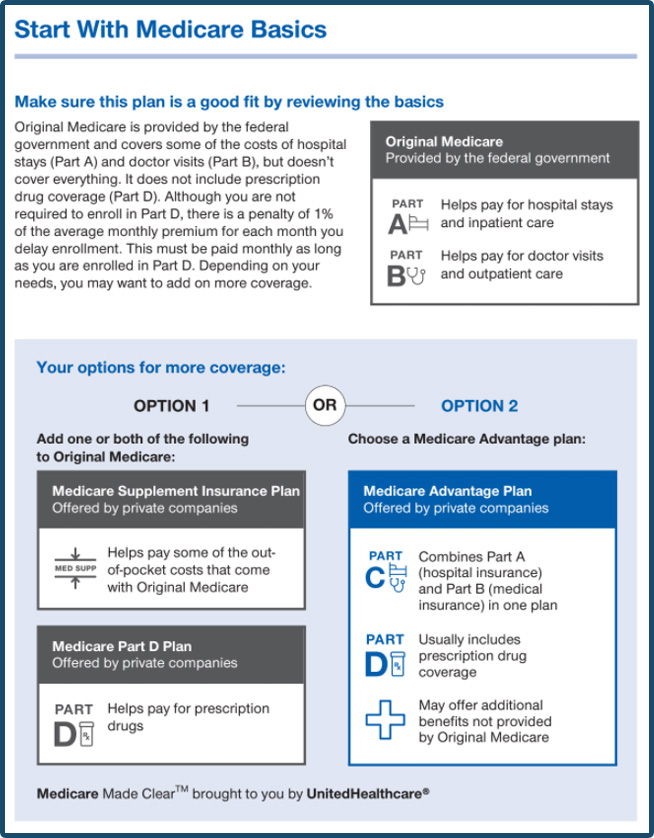Original Medicare (Parts A&B) – Deductibles, Co-insurance, and no stop loss! The GAPS!
When Do You Get Medicare?
Now, assuming you decide to supplement Original Medicare, you generally have two options:

1. Medicare Supplements
Why Do People Choose Medicare Supplements?
- You get to choose your doctors and hospitals. There are no networks.
- Referrals are not necessary. Want to see a specialist? Call and make an appointment!
- Your policy is guaranteed renewable. You cannot be dropped because you are sick.
- You can predict your costs. Once you pay the premium, it is easy to determine your liability.
How Do They Work?
Part A
– Helps pay for hospital stays, inpatient care, hospice, and skilled nursing.
Part B
– Helps pay for doctor visits, testing and outpatient care
Parts A& B are commonly known as “Original Medicare”
Part C
– Combines Part A and B of Medicare into one plan and is offered by private companies. These plans usually include prescription drug coverage.
Part D
– Helps pay for prescription drugs. Can be accessed as a “stand alone” plan with Original Medicare (A&B) or as part of a Medicare Advantage Plan (Part C).
How Do I Enroll?
What Does Medicare Cost?
Part A
For most people Medicare Part A is premium free by virtue of a life full of working and paying taxes. In fact roughly 99% of beneficiaries do not have to pay premium for Part A. The work requirement is working 40 quarters (10 years) and pay payroll taxes. For those that did not work 40 quarters, there will be a premium. For those who worked less than 30 quarters, the premium is $458/mo. Working more than 30 quarters results in a prorated premium of $252.
Part B
Part B cost is based on your income. Most people pay the standard rate which is $144.60/mo. This premium is deducted from your social security payment of you are receiving benefits. If you haven’t started taking your social security, you will be billed quarterly. For people who earn more, Medicare calculates your Modified Adjusted Gross Income (MAGI) to determine your premium. Your MAGI is determined from your IRS tax return from two years prior. Currently about 5% of beneficiaries must pay more than the standard rate.
Part D
Part D plans can run as low as $13/mo for a basic plan and as high as $80/mo or more for plans with enhanced coverage. Which plan you enroll in should be determined by a thorough analysis of your prescription drug needs. Like Part B, people who earn more will have a higher premium requirement for Part D.
Real Clients. Real Help.

John B.

Rebecca K.

Maryann L.

Mary R.

B.F

Mark
Request a Free Consultation
Our Services Are Always Free:
- Medicare.gov Plan Comparison
- Prescription Drug Analysis
- Help With Enrollment
